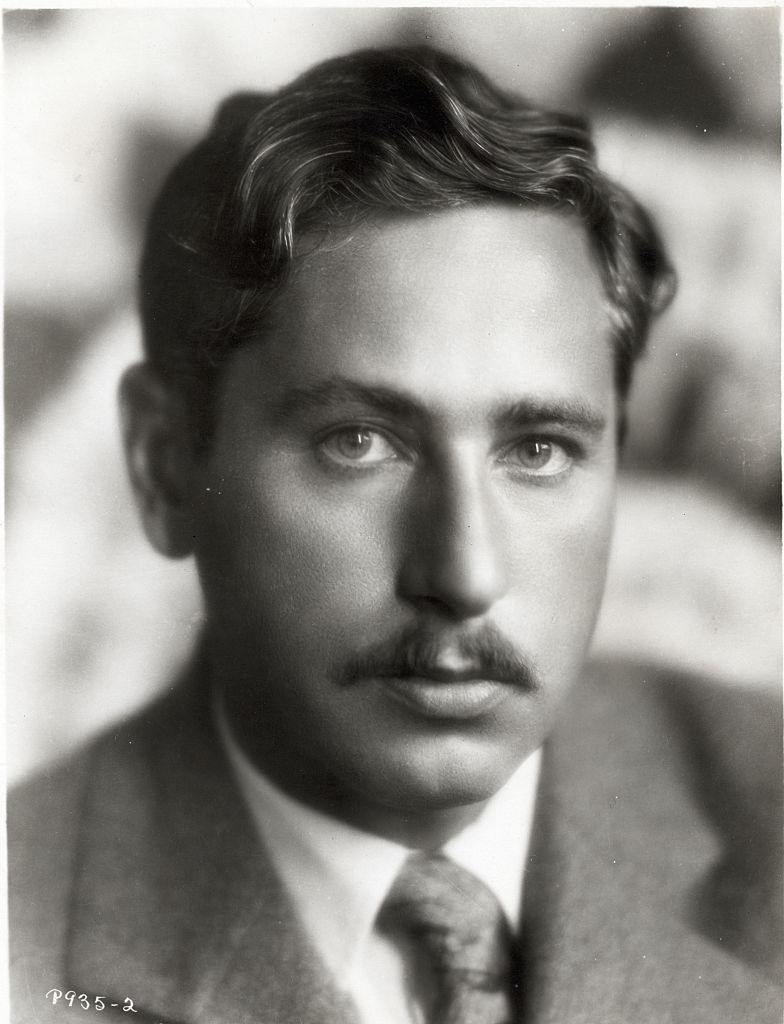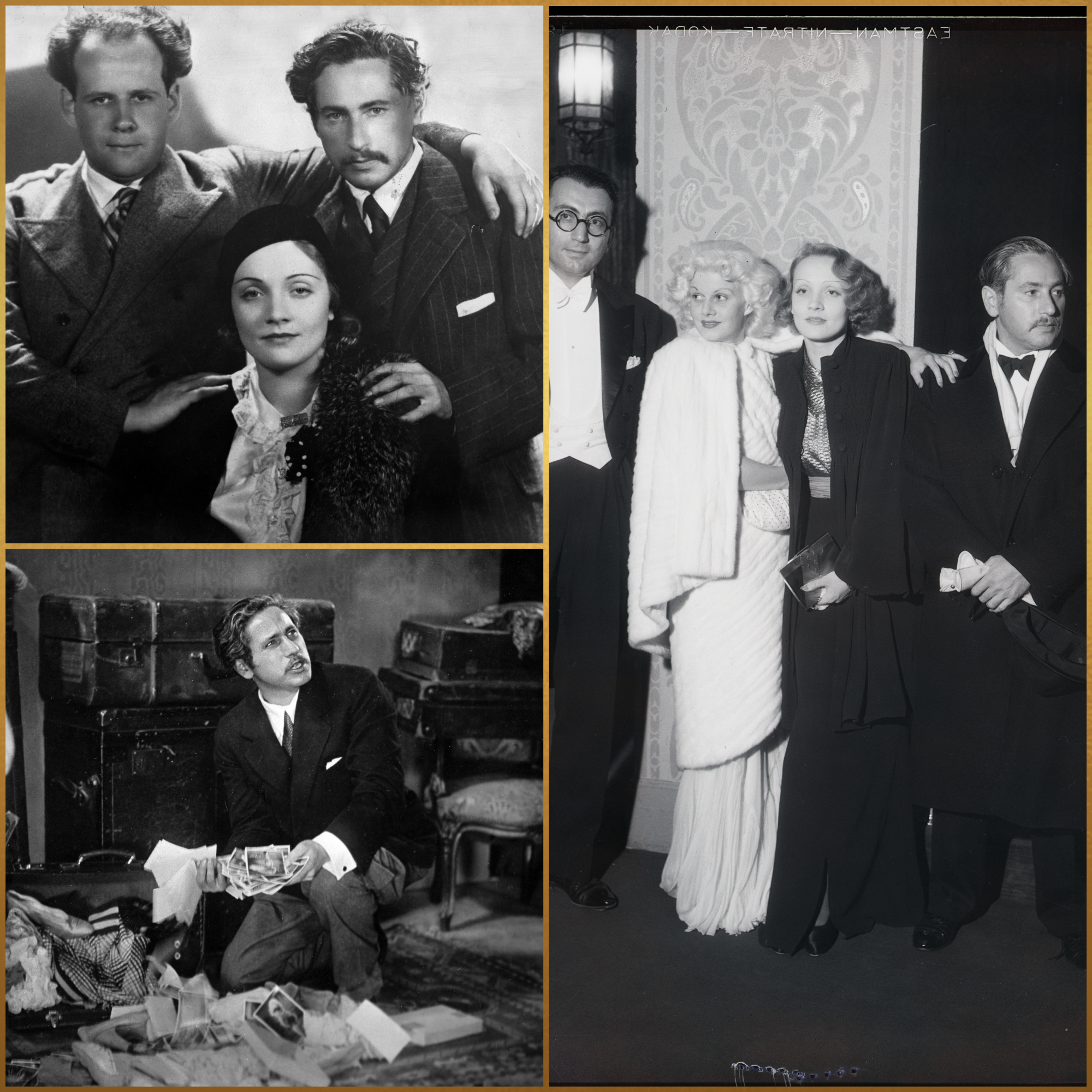
- Film
Filmmakers’ Autobiographies: von Sternberg, “Fun in a Chinese Laundry”
It is very tempting, when opening Josef von Sternberg’s autobiography, “Fun in a Chinese Laundry”, to go straight to the pages about Marlene Dietrich. For many cinephiles, their names are forever linked. A legendary coupling, unparalleled in Hollywood history. The first meeting of those two titans of cinema and their ensuing complex relationship has been dissected, reinvented, manipulated, embellished so many times through the years, that it is fascinating to read the carefully worded first-hand recollection of von Sternberg himself.
The director recounts how in Berlin, in 1930, he had found the ideal Lola Lola for The Blue Angel. An unknown actress who soon became an international sensation. How he was instantly labeled her Svengali for morphing her into the sublimated persona she would be associated with forever. He mentions an autographed photo, inscribed to him in German, “Ich bin nichts ohne Dich.” “I am nothing without you.” “That accolade I declined then, and I do so now,” he protests, “though I must accept some of the responsibility for her image in my films. Until this was radically altered by me, she had been photographed to look like a female impersonator.”
In the next five years, he would direct her in six more films for Paramount. Morocco, Dishonored, Shanghai Express, Blonde Venus, The Scarlett Empress, The Devil is a Woman. All sealing his reputation as an undisputed master of lighting and sculptor of shadows at the apex of his groundbreaking artistic genius. Each film more instrumental in perfecting to the extreme an idealized version of the ultimate glamorous screen goddess. “I did not endow her with a personality that was not her own,” he argues. “One sees what one wants to see, and I gave nothing that she did not already have. What I did was to dramatize her attributes and make them visible for all to see, though, as there were perhaps too many, I concealed some.”
The tone is set. Page after page, von Sternberg rants about Dietrich’s self-serving public acknowledgments of his greatness over the years. Obviously bitter that her legend heightened even more without him. He resents the critics who felt he had trapped her in the same kind of roles. Wasn’t he, after all, the man who gave her professional immortality?
His parting gift was The Devil is a Woman, so ironically titled, released in 1935. “With the completion of this last film with her,” he rather harshly states, “an insistent demand came from all over the globe that this creature I had ruined be torn from my iron clasp. My clasp had been quite loose, and ruin was hardly the word to describe what had been done with her. When we first met, her pay was lower than that of a bricklayer and had she remained where she was, she might have had to endure the fate of a Germany under Hitler.” So, after what he describes as “a period of servitude which at least had brought no discredit to anyone but me.”, he retreated to “his mausoleum” as he calls it, the newly built fortress of glass and steel, surrounded by a moat, designed under his specifications by compatriot and architect Richard Neutra in Northridge.
Flashback. Von Sternberg recalls without nostalgia his childhood in Vienna where he was born in 1895. His move to America at 14 and the enduring hardships trying to find any kind of work. In a millinery shop at first, then cleaning and repairing the surfaces of damaged ribbons of film from dirt and scratches, learning how to operate projection booths in some of Manhattan run-down theaters. How that led to the discovery of cinema and which directors influenced him. From Chaplin to Murnau, Cecil B. deMille to Eric von Stroheim, Eisenstein, Abel Gance, and Lubitsch, How he ended up making his first silent movie, The Salvation Hunters in 1924 after years as an assistant director where he learned his craft, “how to appraise the dimensional aspect of everything in front of the lens.”
He elaborates at length on the language of the movie camera, the aesthetics of film, how to deal with actors, at times sounding quite pompous and arrogant. He wonders sarcastically why suddenly “a duck, a mouse, a rabbit or a fairy princess, animated spasmodically by cartoonists borrowed from the funnies, were hailed as art with capital A.” He often alludes to feeling misunderstood, aware of his reputation for being difficult and controlling, but offers no apologies. This was necessary to achieve his vision. He feels having been too often unjustly vilified, pleading quite movingly his case as a director “having to face the windmills with each project.” “My work can rarely please me, for it consists of a series of concessions to myself and to others,” he opines, adding that “to work in film may be degrading, but to seek employment in the film industry is the most degrading of all.”

Left: Sergei Eisenstein, Josef von Sternberg and Marlene Dietrich in Hollywood, 1929 (top); a very displeased Sternberg on the set of The Blue Angel (bottom); Right: Rouben Mamoulian, Jean Harlow, Marlene Dietrich, and Sternberg, 1934.
sovfoto/universal images group/ ullstein bild/bettman via getty images
For the next 30 years, von Sternberg would make only seven more pictures. Scattered sparks of his brilliance would glow again, here and there, but they were like the afterglow of what had once been celestial fireworks. Crime and Punishment, Sergeant Madden, The Shanghai Gesture… “I have little desire to defend these films, or, for that matter, to explain why I did not reject them”, he writes ruefully.
1937 found him convalescing in a London hospital after an extensive journey through the Far East, one of the many faraway places he often liked escaping to. Producer Alexander Korda offered him to direct the adaptation of Robert Graves’s novel I Claudius, a prestige project with Charles Laughton in the titular role of the Roman emperor. Working with him, was, as von Sternberg put it, “not a nightmare but a daymare.” As the uncontrollable actor was seemingly determined to sabotage every take under the pretense of not finding the sets inspiring enough to get into his character. Von Sternberg had to use all his tricks and ruses to obtain what he wanted, most of the times unsuccessfully. “It was like directing the devil.” To his relief, the filming was interrupted after leading lady Merle Oberon was slightly injured in a car accident. It was never resumed.
In 1949, after almost ten years away from Hollywood, he made his comeback with Jet Pilot, under the RKO banner. His first film in color, starring Janet Leigh and John Wayne. The studio requested he made a preliminary test to prove that his filmmaking skills were intact. “Having demonstrated without a shadow of a doubt that I could function as a director,” he bitterly recalls, “I was now told, step by step, day by day, movement by movement, word for word precisely what I was to direct.” His follow up assignment, Macao, was an equally humiliating experience as, once again, he had barely any control during production, “under the supervision of half a dozen clowns who immersed various parts of their anatomy in it.” The film would only be released seven years later.
In 1953, hoping to find total artistic freedom and control, he went to Japan to direct The Saga of Anatahan. The true story of a group of sailors and one woman, stranded on the eponymous Pacific island for six years after the end of the war. “There I made my best film and the most unsuccessful one.” All the sets were built in Kyoto. “Half of my crew had been trained as kamikaze and the other half had been guerilla fighters in the Philippines, though this had not prepared them for the ordeal of working with me,” he can’t help mentioning with some perverse jubilation. Reviews from Japanese critics were unanimously unfavorable. It was his last film. His 30-year long career had come to a less-than-glorious end.
The last decade of his life was busy with projects, traveling the world to exotic locales and enjoying homages and retrospectives of his work, giving classes about filmmaking to eager students anxious to learn the secrets of the craft from one of its masters.
“Fun in a Chinese Laundry” was published in 1965, four years before his death at age 75. The book’s enigmatic title is a reference to a 1901 eponymous short film, the author deliberately omitting to explain its meaning. Possibly one last way to underscore his disdain for the movie business, that he felt had so often treated him unfairly, even as he ultimately found solace in the fact that “memory consists only of the things one wishes to remember…”